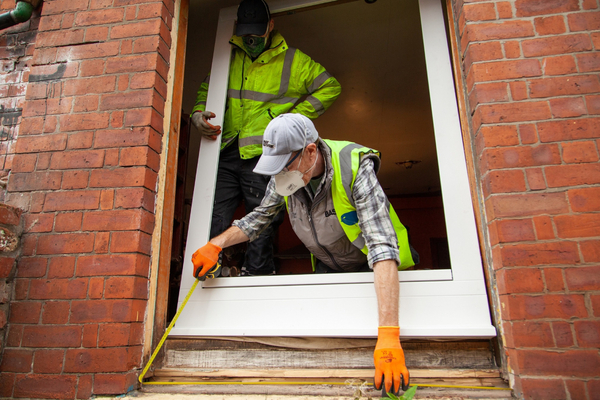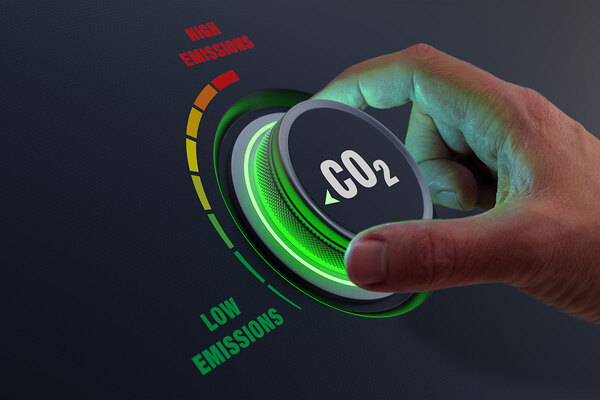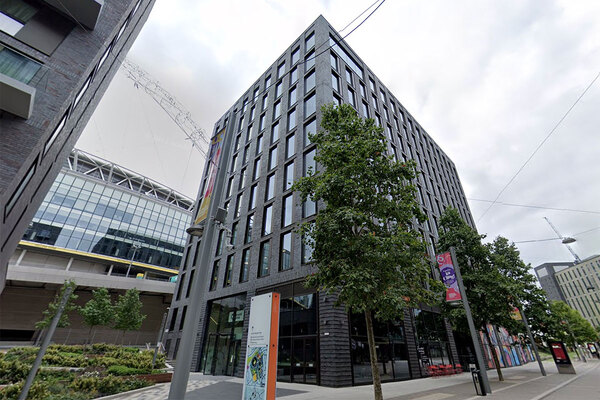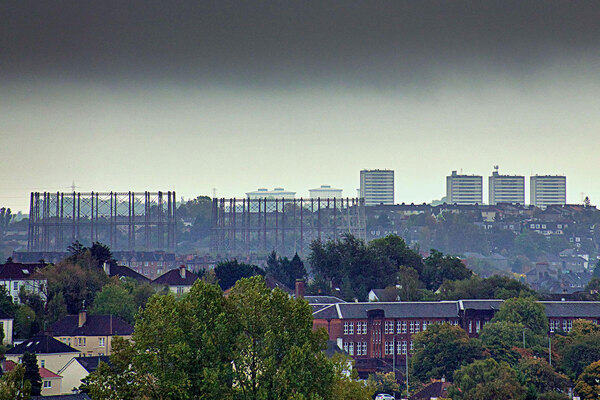The Heat and Buildings Strategy explained: how it will affect the housing sector
This week the government finally published its Heat and Buildings Strategy, which sets out how carbon reductions from homes and workplaces will be dramatically reduced in the lead up to 2050. Lucie Heath has pored through the 200-page document to find the key takeaways for the sector
The social housing sector has been eagerly awaiting the government’s Heat and Buildings Strategy, which ministers promised would set out a strategic direction for the decarbonisation of housing and other buildings in England as we transition towards a net zero economy.
While social landlords are aware that there is no time to waste when it comes to reducing emissions from their housing stock, uncertainty around the government’s plans and potential costs have left many landlords hesitant.
Some of the key questions the housing sector is looking for an answer to include what technologies should they be installing in their homes, what financial support will landlords be given, and what incremental targets will be set on the journey towards net zero?
While the Heat and Buildings Strategy has not provided a comprehensive answer to all of these questions, it has provided a solid outline of the government’s intentions, at least over the next decade.
Here are some of the key takeaways for the sector from the government’s landmark report.
Goodbye, gas
One of the major headlines briefed to the weekend papers ahead of the strategy being published on Tuesday was that the government planned to ban the installation of new gas boilers in homes from 2035.
The actual wording in the strategy is much less strong than what was reported in the media. The government writes that it is “signalling our intention to phase out the installation of new natural gas boilers from 2035”.
In an op-ed for The Sun, prime minister Boris Johnson was keen to assure the public that the “the greenshirts of the boiler police are not going to kick in your door with their sandal-clad feet and seize, at carrot-point, your trusty old combi”.
The plan is to make carbon-free alternatives cheaper to install so that once a homeowner or landlord needs to replace their boiler – something that should happen roughly every 15 years – it makes sense to go with the greener alternative.
Ahead of 2035, the government said it intends to start the decarbonisation process by phasing out the installation of fossil fuel heating systems in properties not connected to the gas grid, which can often be more carbon-intensive.
Alongside the Heat and Buildings Strategy, the government has published a consultation that could see no more fossil fuel heating systems installed in homes that are not connected to the gas grid from 2026.
Hello, heat pumps
So what will replace gas boilers, which currently heat 85% of homes in the UK? The government acknowledges in its strategy that there is still some uncertainty around what a decarbonised heating system will look like in 2050, however it emphasises that we must “accelerate no and low-regrets action now” if we have any chance of meeting the government’s net zero target.
Some of this ‘no-regret’ work will already be a major part of social landlords’ current decarbonisation plans, such as improving the insulation of buildings to ensure that less energy is needed to heat up homes in the first place.
When it comes to installing new heating systems, the government is very keen to emphasise to industry that heat pumps will play a major role in our country’s transition no matter what happens with other technology. “We need to build a market for them now,” the strategy states.
A major part of the government’s plan over the next decade will therefore be “working with industry to reduce the costs of heat pumps by at least 25% to 30% by 2025 and towards parity with boilers by 2030”. The strategy reiterates the government’s commitment to develop an industry with the ability to install 600,000 heat pumps per year by 2028, from a current rate of around 35,000 per year.
In order to drive down the cost of heat pumps, which are powered by electricity, the government is aware that it will need to “rebalance” the cost of electricity and gas. Once the current spike in the price of gas stabilises, the government says it will “look at options to shift or rebalance energy levies and obligations away from energy to gas over this decade”.
Alongside heat pumps, the government is also putting its weight behind heat networks, which see heat transported to buildings via one central source. Heat networks have the major advantage of being compatible with a range of low-carbon heat sources and are therefore been billed as another no-regret option for investment now.
Heat networks will play a major role in high-density areas, such as cities, and the government is proposing the introduction of “heat network zones” in England by 2025. This will create areas in which certain types of buildings, such as all new builds and tower blocks that already use communal systems, will be required to connect to their local heat network within a given timeframe.
What about hydrogen?
In his ‘10-Point Plan for a Green Industrial Revolution’, published last year, Mr Johnson committed his government to “driving the growth of low-carbon hydrogen” as a potential clean source of fuel to heat our homes, transport and industry.
There could be many advantages to transitioning towards hydrogen as a major fuel source, for example it is hoped that hydrogen could be added to the existing gas grid, meaning much of our existing heating infrastructure could remain in place. However, there are still many questions around the viability of hydrogen and work in this area is less developed than the heat pump market.
The Heat and Buildings Strategy says the government will “take strategic decisions on the role of hydrogen for heating buildings in 2026”. In the meantime, ministers will continue to support research in this area. This will include “developing plans by 2025 for a possible hydrogen town”, making a decision on the “blending of hydrogen in the gas grid” in 2023 and consulting on requiring new natural gas boilers to be easily convertible to hydrogen by 2026.
Funding
To coincide with the release of its Heat and Buildings Strategy, the government launched a £3.9bn funding package that outlines what grant will be available to support this transition up until 2025.
This package includes £800m for the Social Housing Decarbonisation Fund, which can be accessed by social landlords to carry out upgrades in their homes.
A further £950m will go towards the Home Upgrade Grant scheme, which can be used by local authorities to support low-income households with retrofit work.
The government also announced a new £450m Boiler Upgrade Scheme, which will provide homeowners with grants of £5,000 from April next year to replace their gas boilers with heat pumps.
To support the development of heat networks, £338m will be spent on the Heat Network Transformation Programme, while the remaining £1.425bn will be allocated to the Public Sector Decarbonisation Scheme, which is for public sector buildings such as schools and hospitals.
While the sector will no doubt be pleased the government has provided funding certainty over the next three years, calls are already being made for chancellor Rishi Sunak to use next week’s Spending Review to confirm the entire 10-year £3.8bn Social Housing Decarbonisation Fund that was promised in the Conservative Party’s 2019 election manifesto.
Targets
Those who were hoping the Heat and Buildings Strategy would provide more certainty over what targets the sector will be expected to hit over the next 30 years, and how these targets will be regulated, may be disappointed.
Overall, the government reiterated its fairly vague commitment to ensure “as many homes as possible” in England achieve an energy performance certificate (EPC) rating of C by 2035, while all fuel-poor homes will be expected to hit this target by 2030.
When it comes to social housing, the government said it will “consider setting a long-term regulatory standard” to bring all social housing up to a standard of EPC C, however there is no mention of bringing this target forward from 2035. Interestingly, the government indicated that it is moving forward with plans to ensure privately rented homes meet this standard by 2028 and will publish its response to the consultation on this by the end of this year.
It is worth noting here that 2035 is quite a generous target for achieving EPC C compared with the devolved nations. The Scottish government has set a target that all social housing must achieve a minimum EPC B by 2032, while the Welsh government is considering setting social landlords a target of EPC A by 2030.
The government also says it is currently considering how the Standard Assessment Procedure (SAP) methodology, which determines the EPC rating of a building, can be changed to “recognise technologies”. As pointed out in a report published on Tuesday by the National Housing Federation, the substitution of electricity for gas could reduce the EPC rating of some buildings under the current methodology.
When it comes to bringing up minimum standards, the government says it will “consider different segments of our building stock differently”. For the social housing sector, it reiterates that the current review of the Decent Homes Standard “will consider how the standard can work to support better energy efficiency and the decarbonisation of social homes”.
For homeowners, the government says it has “consulted on introducing mandatory disclosure requirements for mortgage lenders on the energy performance of homes on which they lend and on setting voluntary improvement targets to be met by 2030”.
While the sector is currently looking towards 2050 as the ultimate target for achieving net zero, the government warns that it will “consider the case for setting a date to ensure that all homes meet a net zero minimum energy performance standard before 2050, where cost-effective, practical and affordable”.
New build homes
The Heat and Buildings Strategy does not have much to say on new builds beyond what we already know through the Future Homes Standard.
The government has confirmed that the Future Homes Standard, which will “ensure that new build homes are future-proofed with low-carbon heating and high levels of energy efficiency”, will come into force in 2025. Homes built under this standard “will produce no operational carbon dioxide (once the supply has been decarbonised)”, it says.
A consultation will take place on whether it is appropriate to prevent new build homes from connecting to the gas grid from this date, the strategy adds.
The government makes clear that heat pumps will play a major role in heating new buildings. It anticipates that at least a third of the 600,000 heat pumps it aims to be installing from 2028 will be put in new build homes.
The Heat and Buildings Strategy is silent on embodied carbon, which is the carbon emitted during the construction of a building. But the government’s Net Zero Strategy, also published on Tuesday, mentions plans to improve “reporting on embodied carbon in buildings”. It also released £440m for green construction projects.
Sign up for our asset management newsletter
Already have an account? Click here to manage your newsletters












